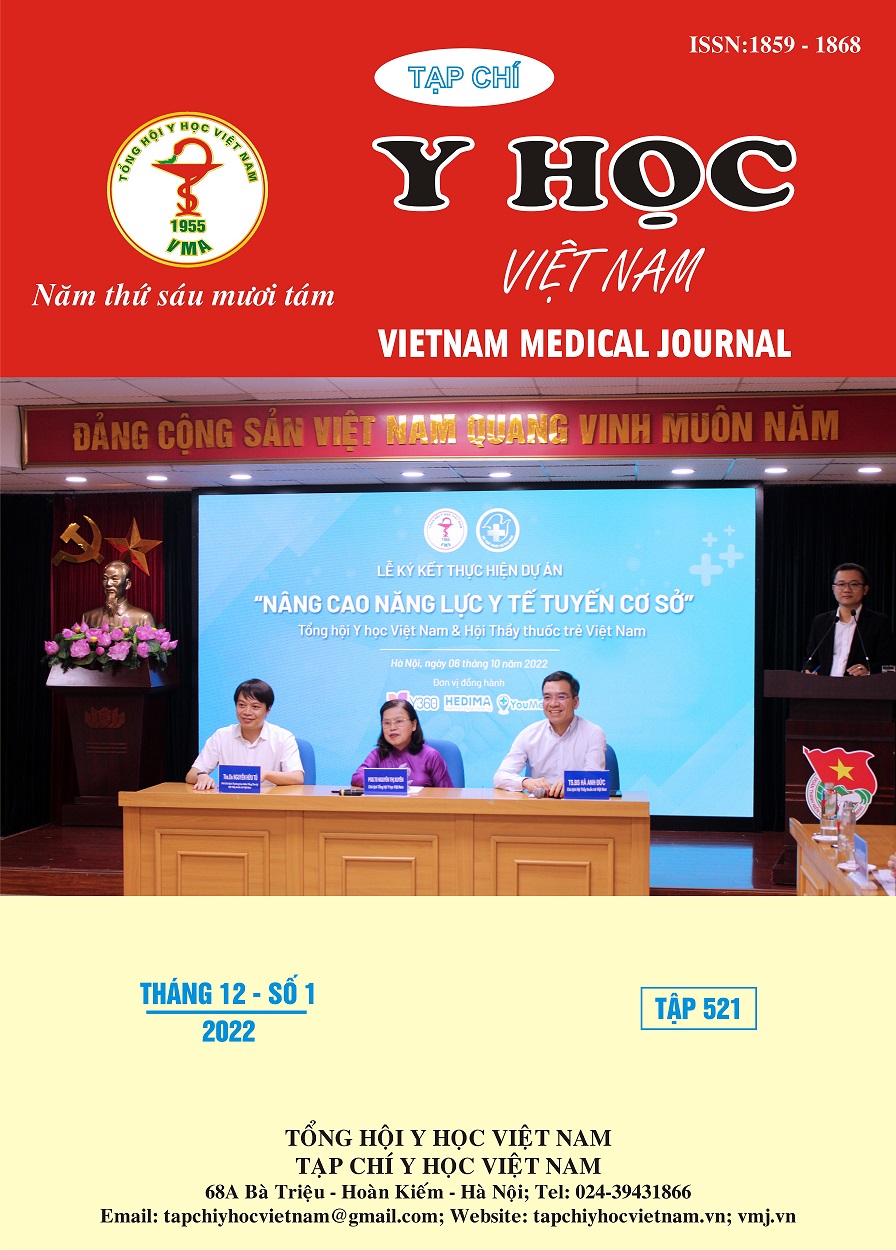BƯỚC ĐẦU NGHIÊN CỨU TYP BỆNH ĐÁI THÁO ĐƯỜNG Ở NGƯỜI TRẺ TUỔI TẠI BỆNH VIỆN BẠCH MAI
Nội dung chính của bài viết
Tóm tắt
Đặt vấn đề: Tỷ lệ đái tháo đường ngày càng tăng cao ở người trẻ tuổi, đặc biệt ở các nước đang phát triển. Ở Việt Nam, tỷ lệ này ngày càng tăng cao nhưng đến nay vẫn chưa có nghiên cứu nào được thực hiện. Mục tiêu: Mô tả triệu chứng của đái tháo đường ở người trẻ tuổi, bước đầu xác định typ đái tháo đường và một số nguyên nhân gây bệnh ở nhóm đối tượng nghiên cứu này. Phương pháp nghiên cứu: Nghiên cứu mô tả có theo dõi, 127 bệnh nhân được chẩn đoán mắc đái tháo đường với độ tuổi từ 18 đến 40 tuổi, thời gian mắc bệnh dưới 5 năm, có một số trường hợp đặc biệt theo dõi trong khoảng thời gian từ 7/2021 đến tháng 8/2022. Kết quả: Đái tháo đường typ 1 và đái tháo đường typ 2 có tỷ lệ khác biệt nhau, lần lượt: 24.4% và 67.7%, sau đó là đái tháo đường liên quan đến bệnh lý tuyến tụy chiếm 7.9% trong tổng số các bệnh nhân nghiên cứu. Độ tuổi mắc bệnh trung bình là 29 tuổi, với tỷ lệ phân bố ở hai giới là không có sự khác biệt, 53.4% và 46.6%. Đa số các bệnh nhân trẻ tuổi trong nghiên cứu đều là thời điểm mới phát hiện bệnh, chiếm 56.7% tổng số bệnh nhân, và triệu chứng phát hiện bệnh là khác nhau giữa các typ đái tháo đường, có ý nghĩa thống kê ở bệnh nhân đái tháo đường typ 1 và đái tháo đường typ 2. Các bệnh nhân đái tháo đường liên quan đến bệnh lý tuyến tụy lại có biểu hiện triệu chứng lâm sàng chủ yếu là ngộ độc đường tại thời điểm phát hiện bệnh. Kết luận: Đái tháo đường ở người trẻ tuổi với tỷ lệ mắc đái tháo đường typ 1 và typ 2 là khác biệt. Bệnh lý đái tháo đường – tuyến tụy cũng xảy ra ở lứa tuổi này. Nên sàng lọc khi có các triệu chứng và biểu hiện liên quan.
Chi tiết bài viết
Từ khóa
Đái tháo đường, người trẻ tuổi, bệnh lý tuyến tụy, Anti GAD, C-peptid lúc đói
Tài liệu tham khảo
2. Borg H, Arnqvist HJ, Björk E, et al. Evaluation of the new ADA and WHO criteria for classification of diabetes mellitus in young adult people (15-34 yrs) in the Diabetes Incidence Study in Sweden (DISS). Diabetologia. 2003;46(2):173-181. doi:10.1007/s00125-002-1021-4
3. Pan CY, So WY, Khalid BAK, et al. Metabolic, immunological and clinical characteristics in newly diagnosed Asian diabetes patients aged 12-40 years. Diabet Med J Br Diabet Assoc. 2004;21(9):1007-1013. doi:10.1111/j.1464-5491.2004.01287.x
4. Mayer-Davis EJ, Davis C, Saadine J, et al. Diabetic retinopathy in the SEARCH for Diabetes in Youth Cohort: a pilot study. Diabet Med J Br Diabet Assoc. 2012;29(9):1148-1152. doi:10.1111/j.1464-5491.2012.03591.x
5. Khunti K, Del Prato S, Mathieu C, Kahn SE, Gabbay RA, Buse JB. COVID-19, Hyperglycemia, and New-Onset Diabetes. Diabetes Care. 2021;44(12):2645-2655. doi:10.2337/dc21-1318
6. Constantino MI, Molyneaux L, Limacher-Gisler F, et al. Long-term complications and mortality in young-onset diabetes: type 2 diabetes is more hazardous and lethal than type 1 diabetes. Diabetes Care. 2013;36(12):3863-3869. doi:10.2337/dc12-2455
7. Dart AB, Sellers EA, Martens PJ, Rigatto C, Brownell MD, Dean HJ. High burden of kidney disease in youth-onset type 2 diabetes. Diabetes Care. 2012;35(6):1265-1271. doi:10.2337/dc11-2312
8. de Ferranti SD, de Boer IH, Fonseca V, et al. Type 1 diabetes mellitus and cardiovascular disease: a scientific statement from the American Heart Association and American Diabetes Association. Diabetes Care. 2014;37(10):2843-2863. doi:10.2337/dc14-1720
9. Hillier TA, Pedula KL. Complications in young adults with early-onset type 2 diabetes: losing the relative protection of youth. Diabetes Care. 2003;26(11):2999-3005. doi:10.2337/diacare.26.11.2999
10. Diabetes. Accessed June 19, 2021. https://www.who.int/news-room/fact-sheets/detail/diabetes


